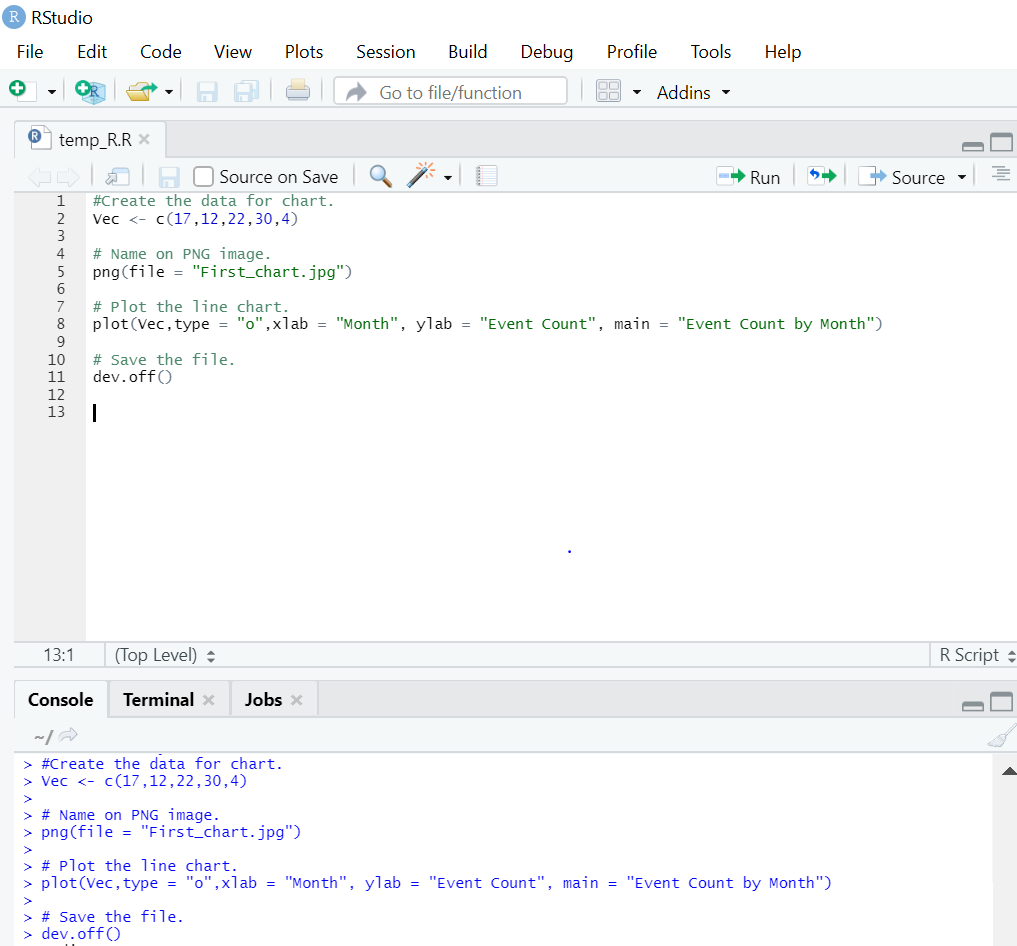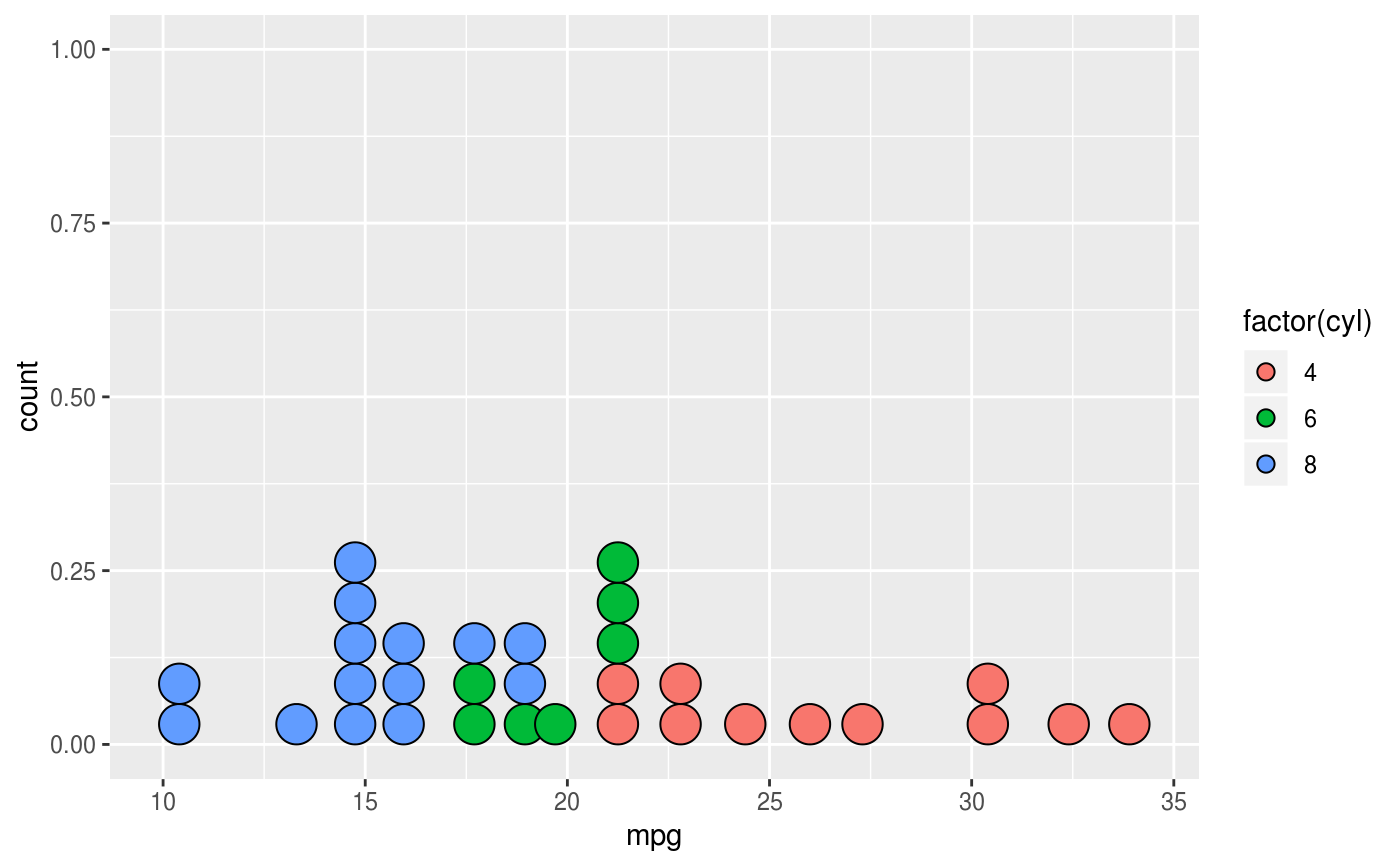

# Graph suvs with green dotted line and diamond points lines(autos_data$suvs, type="o", pch=23, lty=3,Ĭol=plot_colors) # Create a title with a red, bold/italic font Lines( autos_data$trucks, type="o", pch=22, lty=2, # Graph trucks with red dashed line and square points # Make y axis with horizontal labels that display ticks at # every 4 marks. # Turn off axes and annotations (axis labels) so we can # specify them ourself

#Write graph r driver#
# Read car and truck values from tab-delimited autos.dat autos_data <- read.table("C:/R/autos.dat", header=T, sep="\t") # Compute the largest y value used in the data (or we could # just use range again) max_y <- max(autos_data) # Define colors to be used for cars, trucks, suvs plot_colors <- c("blue","red","forestgreen") # Start PNG device driver to save output to figure.png png(filename="C:/R/figure.png", height=295, width=300,īg="white") # Graph autos using y axis that ranges from 0 to max_y. Finally we'll send the figure directly to a Want to change the colors later on, there's only one place in the file that We'll also use a vector for storing the colors to be used in our graph so if we In the C:/R directory (you'll use a different path if not using Windows). The fileĬontains an additional set of values for SUVs. Now let's read the graph data directly from a tab-delimited file. Title(ylab="Total", col.lab=rgb(0,0.5,0)) # Create a legend at (1, g_range) that is slightly smaller # (cex) and uses the same line colors and points used by # the actual plots legend(1, g_range, c("cars","trucks"), cex=0.8,Ĭol=c("blue","red"), pch=21:22, lty=1:2) # Label the x and y axes with dark green text title(xlab="Days", col.lab=rgb(0,0.5,0)) # Create a title with a red, bold/italic font axis(2, las=1, at=4*0:g_range) # Create box around plot box() # Graph trucks with red dashed line and square points # Make x axis using Mon-Fri labels axis(1, at=1:5, lab=c("Mon","Tue","Wed","Thu","Fri")) # Make y axis with horizontal labels that display ticks at # every 4 marks. Plot(cars, type="o", col="blue", ylim= g_range, Turn off axes and # annotations (axis labels) so we can specify them ourself # Calculate range from 0 to max value of cars and trucks g_range <- range(0, cars, trucks) # Graph autos using y axis that ranges from 0 to max # value in cars or trucks vector. We'llĪlso compute the y-axis values using the max function so any changes to ourĭata will be automatically reflected in our graph. Next let's change the axes labels to match our data and add a legend. Title(main="Autos", col.main="red", font.main=4) Plot(cars, type="o", col="blue", ylim=c(0,12)) # Graph trucks with red dashed line and square points lines(trucks, type="o", pch=22, lty=2, col="red") # Create a title with a red, bold/italic font Trucks <- c(2, 5, 4, 5, 12) # Graph cars using a y axis that ranges from 0 to 12 Will be large enough to fit the truck data:

Now let's add a red line for trucks and specify the y-axis range directly so it Plot(cars, type="o", col="blue") # Create a title with a red, bold/italic font title(main="Autos", col.main="red", font.main=4) # Graph cars using blue points overlayed by a line Let's add a title, a line to connect the points, and some color: # Graph the cars vector with all defaults The graph produced by each example is shown on the right.įirst we'll produce a very simple graph using the values in the car vector:

The areas in bold indicate new text that was added to the previousĮxample. The following is an introduction for producing simple graphs with the


 0 kommentar(er)
0 kommentar(er)
